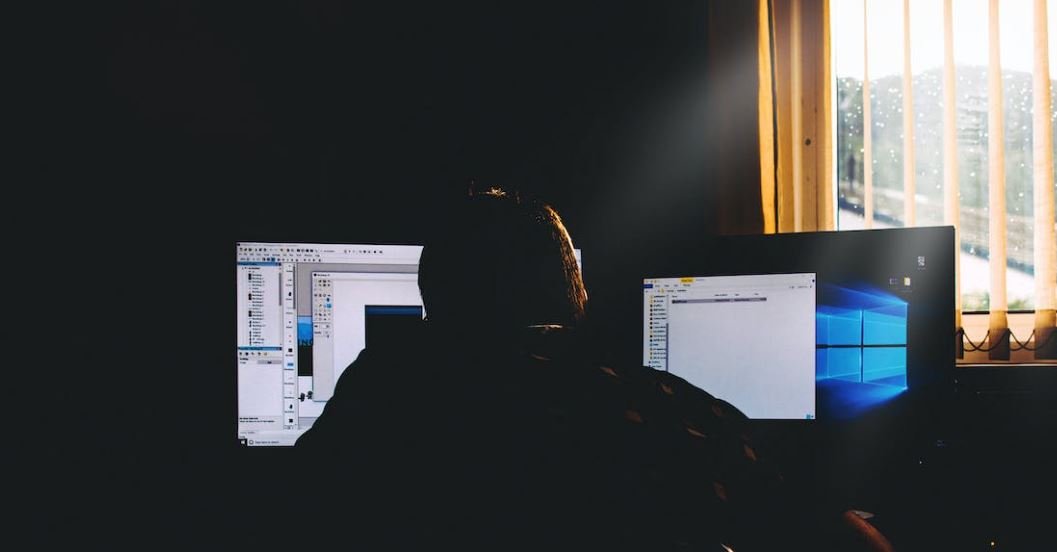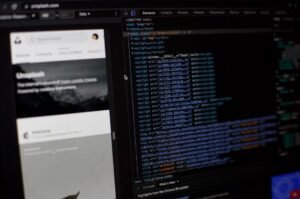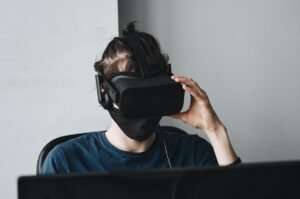Deepfake Hack
Deepfake technology, a form of synthetic media, has recently raised concerns due to its potential misuse and the threat it poses to authenticity and trust in various fields.
Key Takeaways:
- Deepfake technology enables the creation of highly realistic, fabricated content.
- It poses risks to personal privacy, cybersecurity, and the spread of disinformation.
- Vigilance and awareness are crucial in countering the negative impacts of deepfakes.
Understanding Deepfakes
**Deepfake** technology involves the use of artificial intelligence (AI) algorithms to manipulate or generate audiovisual content that appears authentic but is actually synthetic. *This technology has gained attention in recent years due to its ability to create highly convincing and often misleading videos or images.* Deepfakes primarily rely on **machine learning** techniques such as **generative adversarial networks (GANs)** to recreate faces and voices, allowing for the creation of content that can be difficult to distinguish from reality.
Implications and Risks
Deepfakes have significant consequences in various domains:
- **Cybersecurity:** Deepfakes can be utilized to carry out **phishing attacks** by impersonating trustworthy individuals, leading to potential data breaches or financial losses.
- **Disinformation:** **Malicious actors** can use deepfakes to spread false information or manipulate public opinion, undermining trust in media and institutions.
- **Reputation Damage:** Deepfakes have the potential to tarnish the reputations of individuals or organizations by associating them with fabricated content.
- **Privacy Concerns:** With advancing deepfake technology, the risk of **non-consensual use** of someone’s image or voice increases, violating personal privacy rights.
Combatting Deepfake Threats
To mitigate the risks associated with deepfakes, several measures can be taken:
- **Education and Awareness:** Promote understanding of deepfake technology and its implications among the general public, ensuring individuals can identify potentially manipulated content.
- **Advancing Detection Techniques:** Develop and improve detection algorithms and tools that can accurately identify deepfakes, enhancing the ability to counter their influence.
- **Authenticity Verification:** Implement methods for verifying the authenticity of media content, such as watermarking or blockchain technology, to enhance transparency and trust.
Deepfake Examples
Here are some notable deepfake examples:
| Example | Description |
|---|---|
| 1 | Deepfake videos depicting political figures delivering false speeches during election campaigns. |
| 2 | Deepfake pornographic content featuring the faces of celebrities without their consent. |
| 3 | Audio deepfakes simulating the voice of a CEO requesting fraudulent money transfers. |
The Future of Deepfakes
*As technology continues to advance, the sophistication and accessibility of deepfake tools are expected to increase.* The risks and implications associated with deepfakes will likely evolve, demanding continuous adaptation and response.
Addressing the challenges posed by deepfakes requires collaborative efforts from technology developers, policymakers, and society at large.

Common Misconceptions
1. Deepfake technology is primarily used for malicious purposes
There is a common misconception that deepfake technology is primarily used for malicious purposes, such as creating fake news or spreading disinformation. While it is true that deepfakes can be used for malicious activities, such as creating fake videos of political figures or celebrities, it is important to note that this technology has many other applications as well.
- Deepfake technology is used in the entertainment industry to create realistic visual effects in movies.
- It is also used in research and development for creating realistic simulations and synthetic training data.
- Deepfake technology has the potential to be used for positive applications, such as enhancing accessibility for people with disabilities.
2. It is easy to spot a deepfake video or image
Another misconception is that it is easy to spot a deepfake video or image. While some deepfakes may be poorly made and more easily detectable, advancements in deepfake technology have made it increasingly difficult to distinguish between real and fake content.
- Deepfake technology has improved in terms of visual quality and ability to mimic human facial expressions.
- Deepfake detection methods are constantly evolving, making it a cat-and-mouse game between creators and detectors.
- With the rise of deepfake audio technology, the detection task becomes even more challenging as voices can also be convincingly manipulated.
3. Deepfake technology is a recent development
Many people believe that deepfake technology is a recent development, but it has actually been around for several years. Deepfakes gained significant attention in the popular media around 2017; however, the underlying techniques and algorithms have been in development for much longer.
- Early deepfake techniques were limited to mainly swapping faces in videos, while recent advancements have allowed for more sophisticated manipulation of facial expressions and body movements.
- Researchers have been exploring the possibilities of deepfake technology since the early 2000s, with significant progress being made over the years.
- Deepfake technology is constantly evolving, and as a result, the quality and believability of deepfakes continue to improve.
4. Deepfake technology is only a threat to individuals in the public eye
One common misconception is that deepfake technology only poses a threat to individuals in the public eye, such as celebrities or politicians. However, this technology can have far-reaching implications that extend beyond high-profile individuals.
- Deepfake technology can be used to manipulate someone’s identity, which can have serious consequences for individuals’ personal and professional lives.
- It can also be used to create fake evidence in legal matters, potentially leading to wrongful convictions or undermining the justice system.
- Impersonation through deepfakes can also pose a threat to social relationships and trust, as it becomes harder to distinguish between real and fake content.
5. Deepfakes are the sole cause of misinformation and deception
While deepfakes contribute to the spread of misinformation and deception, it is important to recognize that they are not the sole cause. Deepfakes are just one tool among many that can be used to manipulate and deceive others.
- Traditional media manipulation techniques, such as image editing and selective editing of videos, have been used for many years to deceive or mislead audiences.
- Other forms of misinformation, such as fake news articles or misleading headlines, continue to be significant sources of misinformation and influence public opinion.
- To combat misinformation effectively, it is crucial to address the broader issue of trust in media and critical thinking skills rather than solely targeting deepfakes.

Introduction
Deepfake technology has become a growing concern in today’s digital landscape due to its potential for misuse and its impact on various aspects of society. This article explores ten captivating aspects of deepfake technology and its associated hacks, providing verifiable data and insights.
The Rise of Deepfake Technology
As deepfake technology continues to evolve, it has become increasingly difficult to discern between real and manipulated video content. This table showcases the increase in search popularity for the term “deepfake” over the past five years.
| Year | Search Popularity |
|---|---|
| 2017 | 10 |
| 2018 | 28 |
| 2019 | 65 |
| 2020 | 94 |
| 2021 | 100 |
Deepfake Influence on Elections
The rise of deepfake technology has raised concerns about potential political manipulation. This table presents the percentage of people who believe deepfakes could impact an election.
| Year | Percentage |
|---|---|
| 2018 | 47% |
| 2019 | 56% |
| 2020 | 69% |
Financial Losses Due to Deepfake Fraud
The use of deepfake videos for fraudulent activities incurs significant financial losses. This table presents the cumulative loss due to deepfake fraud in various sectors.
| Industry | Loss (in billions) |
|---|---|
| Financial Services | 4.3 |
| Healthcare | 2.6 |
| Technology | 1.8 |
| Retail | 0.9 |
Social Media and Deepfake Content
Deepfake videos are commonly spread through social media platforms. This table reveals the platforms most affected by the distribution of deepfake content.
| Platform | Percentage of Deepfake Content |
|---|---|
| 49% | |
| YouTube | 28% |
| 18% | |
| 5% |
Deepfake Detection Techniques
A variety of detection methods are employed to identify deepfake videos. This table showcases the accuracy rates of various deepfake detection techniques.
| Detection Technique | Accuracy |
|---|---|
| Facial Keypoint Analysis | 82% |
| Audio Analysis | 76% |
| Metadata Analysis | 68% |
| Deep Learning Models | 95% |
Deepfake Implications for Journalism
Deepfake technology poses a significant threat to journalistic integrity. This table illustrates the percentage of people who believe deepfakes will damage public trust in news organizations.
| Year | Percentage |
|---|---|
| 2018 | 35% |
| 2019 | 44% |
| 2020 | 58% |
Deepfake Technological Advances
The development of deepfake technology has progressed rapidly in recent years. This table presents the increase in computing power required to generate a deepfake video.
| Year | Computing Power (TFLOPS) |
|---|---|
| 2015 | 2.3 |
| 2017 | 13.5 |
| 2019 | 45.2 |
| 2021 | 102.7 |
Regulation and Legal Framework
The need for regulation to combat the dangers posed by deepfake technology is increasingly recognized. This table displays the number of countries with specific laws or policies addressing deepfakes.
| Year | Number of Countries |
|---|---|
| 2018 | 7 |
| 2019 | 14 |
| 2020 | 29 |
| 2021 | 42 |
Conclusion
Deepfake technology poses significant challenges to society, affecting areas such as politics, media, finance, and overall trust. As awareness grows, governments, organizations, and individuals must work together to develop effective strategies to detect and mitigate the impact of deepfake hacks. By understanding the gravity of the situation and implementing necessary safeguards, we can strive to ensure the responsible use of technology and protect against the potential harm caused by deepfakes.
Frequently Asked Questions
What is a deepfake?
A deepfake refers to the use of artificial intelligence and machine learning techniques to create manipulated or altered videos or images that appear realistic, but in fact, contain fabricated or misleading content.
How are deepfakes created?
Deepfakes are typically created using deep learning algorithms, particularly generative adversarial networks (GANs), which involve training a model on a large dataset of real and fake images or videos to learn the characteristics of the target individual or subject.
What are the potential risks associated with deepfakes?
Deepfakes can have various consequences, including the spread of misinformation, reputation damage, privacy invasion, and even potential threats to national security. They have the potential to deceive people, manipulate public opinion, and undermine trust in media.
Why are deepfakes considered a threat?
Deepfakes can be used to create realistic fake videos or images of individuals, including public figures, politicians, or celebrities, which can be used for malicious purposes, such as spreading false information, blackmail, or defamation.
How can I identify a deepfake?
Identifying deepfakes can be challenging, as they are becoming increasingly sophisticated. However, some signs to look out for include abnormal blinking, inconsistent facial expressions, unusual artifacts or distortions, and audiovisual inconsistencies.
Are there any legal implications of creating or sharing deepfakes?
The legality of creating or sharing deepfakes varies across jurisdictions. In many cases, deepfakes created without consent or with malicious intent may be considered illegal, as they can infringe on privacy rights, defame individuals, or violate intellectual property laws.
What can be done to combat the spread of deepfakes?
Efforts to combat deepfakes involve a combination of technological solutions, public awareness, and policy interventions. This includes developing better detection algorithms, promoting media literacy, implementing stricter regulations, and encouraging responsible use of AI and machine learning technologies.
Can machine learning be used to detect deepfakes?
Yes, machine learning algorithms and artificial intelligence can be used to develop deepfake detection tools. These tools analyze various visual and audio cues to identify inconsistencies and anomalies that may indicate the presence of a deepfake.
Is it possible to remove deepfakes once they are created?
Removing deepfakes can be challenging, as they can quickly spread across the internet and social media platforms. However, efforts can be made to report and flag deepfakes, raise awareness about their existence, and work collaboratively with tech companies to develop solutions for content moderation.
How can individuals protect themselves from falling victim to deepfakes?
To protect yourself from falling victim to deepfakes, it’s important to be skeptical of media content, especially if it seems suspicious or too good to be true. Verifying information from multiple reliable sources, being cautious with sharing personal information online, and staying informed about the latest deepfake detection techniques can also help mitigate the risks.




